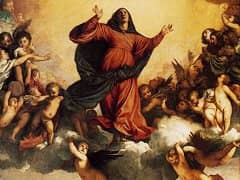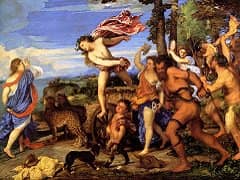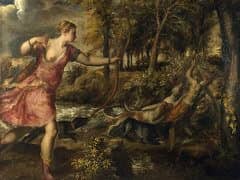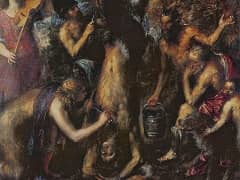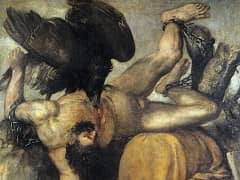The Presentation of the Virgin in the Temple, 1534-38 by Titian
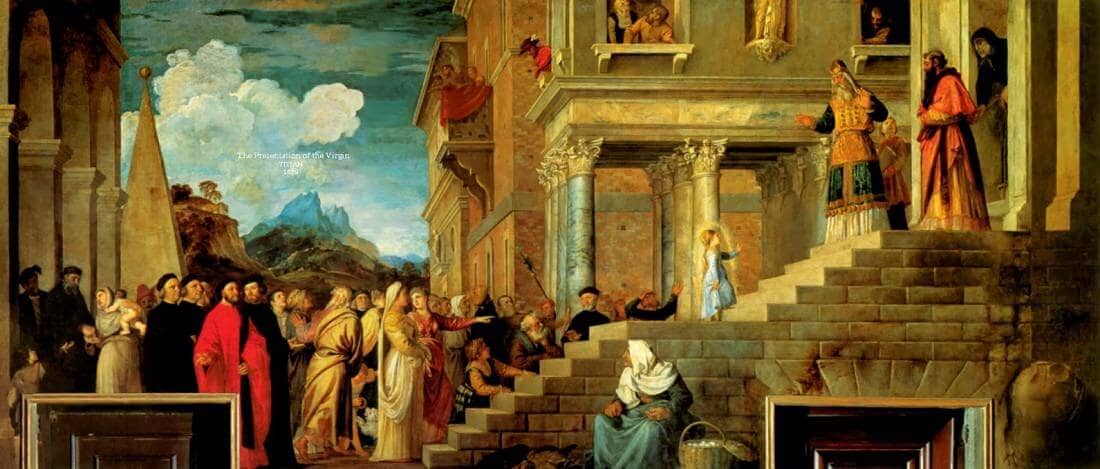
This vast canvas still decorates the wall for which it was created in the Sala dell'Albergo of the Scuola Grande di Santa Maria della Carita - which was transformed into the galleries of the Accademia early in the last century. The original commission had been awarded in 1504 to a little-known Venetian painter, Pasqualino Veneto, who died, however, before carrying it out; not until thirty years later did the confraternity return to the project. The prehistory behind Titian's painting may be particularly significant, since it has often been observed that the master here invoked an archaic compositional tradition, that of the narrative tableaux developed in the late fifteenth century. The brothers of the Carita had indeed retained Pasqualino's design and perhaps insisted that certain of its aspects be followed. However that may be, Titian accepted the challenge; working within the context of that conservative heritage, he transformed the inherited material, elevating it to new levels of formal monumentality and expressive subtlety.
The flowing procession of the narrative line, the basic parallelism of the spatial structure, the asymmetry of the backdrop, the mixing of contemporary portraits (of the officers of the scuola) and architecture with a historically distant subject - these devices are all characteristic of the art of an older generation, that of Gentile Bellini and Carpac-cio. Measured against this background, Titian's variations stand out in high relief: the rhythms of his procession are more dynamic and, within the constraints of the processional format with its insistent regularity, his figures move with energy and variety, distinguishing themselves by the quality of their poses and gestures. Dominating the varied crowd, however, and focusing its diverse energies, is the diminutive figure of Mary ascending the steps of the temple; she is the unifying factor in this disparate assembly, whose members either actually accompany her on this historical occasion (her parents, the attendant virgins, the welcoming priests), bear witness to the event (the sixteenthcentury followers of the procession), or, like us, observe the full spectacle from a certain distance (the spectators watching from the palace windows and balcony above).
Throughout the composition Titian has emphasized the plane, and elements of spatial recession have been deliberately muted. The progress of the procession is plotted against the structural coordinates of the architecture which pace the rhythm across the length of the field - a movement measured by the clear modular units of the staircase wall, and again by the smaller rectangles of the diaper masonry in the middle distance. The foreground wall has been fitted with precision to the actual door of the room, its drafted masonry adapted to form the lintel (the door to the left was cut into the painting later, in 1572). Such pictorial artifice, immediately juxtaposing the fictive and the real, also implies an identification of the painted stone wall with the surface of the canvas - and hence with the wall of the albergo itself.
Before the painted wall Titian set two forms, an old woman and an antique torso. Because they are so deliberately isolated in an ambiguous zone, they acquire very special status. The old egg seller, in particular, placed below the Virgin and so pointedly looking in the opposite direction, counters the basic flow of the pageant's narrative impulse, while the torso remains hidden in the corner darkness. By their placement outside the space of the event, they represent, with the imaginative concreteness with which Titian endowed abstractions, the worlds of the Old Testament and of Greco-Roman antiquity, the era before Christian grace.

